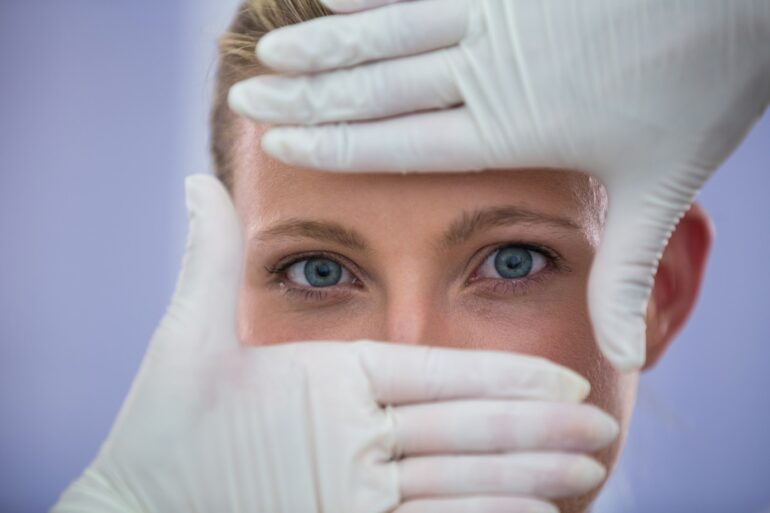Understanding Dark Eye Circles
Dark eye circles, often characterized by a shadowy appearance under the eyes, are a common cosmetic concern affecting people of all ages and backgrounds. These circles can make individuals look tired, aged, or unwell, leading to a less vibrant appearance.
The emotional impact of dark circles cannot be understated. Many individuals feel self-conscious about their appearance, which can significantly affect their self-esteem. This concern often leads to a quest for various treatments and remedies, as the desire to present oneself positively is a natural inclination.
Moreover, the skin around the eyes is particularly delicate, being about 10 times thinner than the skin on the rest of the face. This sensitivity makes it more susceptible to factors like aging, environmental stressors, and lifestyle choices, which can all contribute to the visibility of dark circles. Understanding this delicate nature is crucial in addressing the issue effectively.
Causes of Dark Eye Circles

Understanding the various factors that contribute to dark eye circles is essential for effective treatment. Here are some of the primary causes:
- Genetics: Family history plays a significant role in the development of dark circles. Individuals with a family history of dark circles are more likely to experience them themselves. According to a study published in the Journal of Dermatology, nearly 50% of participants reported a familial link to their under-eye pigmentation.
- Lifestyle Habits: Poor lifestyle choices can exacerbate dark circles. Key factors include:
- Lack of Sleep: Insufficient sleep can make dark circles appear more pronounced. Aim for at least 7-8 hours of quality sleep each night.
- Dehydration: When the body is dehydrated, the skin can look dull and sunken. Staying adequately hydrated can help maintain a more youthful appearance.
- Excessive Sun Exposure: Prolonged exposure to the sun can increase melanin production around the eyes, leading to darker pigmentation. Always wear sunscreen and sunglasses for protection.
- Skin Aging: As we age, the skin loses collagen and elasticity, resulting in a thinner under-eye area. This natural aging process can make blood vessels more visible, contributing to the appearance of dark circles.
- Allergies: Allergic reactions can lead to inflammation and vascular congestion, making dark circles more prominent. Common allergens include pollen, dust mites, and pet dander.
Statistics reveal that the prevalence of dark circles varies across different demographics. For instance, a survey found that 30% of adults aged 18-24 reported dark circles, while this figure rises to 60% in those aged 45 and above. Understanding these causes can aid in identifying the most appropriate treatment methods to tackle dark eye circles effectively.
Dark Eye Circle Reduction Treatments

Topical Treatments
Topical treatments play a vital role in reducing the appearance of dark eye circles. These formulations are designed to penetrate the delicate skin around the eyes, targeting pigmentation and promoting a brighter, more youthful look. With the right ingredients, you can effectively nourish and rejuvenate this sensitive area.
Here are some key ingredients to look for in topical treatments:
- Vitamin C: Known for its brightening properties, Vitamin C helps to reduce pigmentation and promotes collagen production, leading to firmer skin.
- Retinol: A derivative of Vitamin A, retinol accelerates cell turnover and aids in smoothing fine lines, making it an excellent choice for aging skin.
- Hyaluronic Acid: This powerful humectant draws moisture to the skin, helping to plump and hydrate the under-eye area, effectively reducing the appearance of dark circles.
By incorporating the right topical treatments into your skincare routine, you can effectively combat dark eye circles and restore a bright, youthful appearance to your eyes.
Aesthetic Treatments
For those seeking more immediate and pronounced results in reducing dark eye circles, aesthetic treatments can be a game-changer. These reduce dark eye circle treatments in Singapore are performed by licensed professionals and can significantly enhance the appearance of the under-eye area. The most popular choice is eye filler and Rejuran I.
Under-eye Filler
For those seeking immediate results in reducing dark eye circles, dermal fillers are an effective addition to aesthetic treatments. Fillers, such as hyaluronic acid, are injected into the under-eye area to restore volume and smooth out hollows that can contribute to a tired appearance. Key benefits of fillers include:
- Instant volume restoration: Fills sunken areas under the eyes.
- Reduced appearance of dark circles: Minimizes shadowing that causes dark circles.
- Minimal downtime: Patients can typically resume normal activities shortly after the treatment.
Rejuran I
Rejuran I is another popular treatment for dark eye circles. Unlike fillers, which focus on volume restoration, Rejuran I focuses on skin rejuvenation at the cellular level. It contains polynucleotides (PN), which promote collagen production and stimulate skin repair.
- Improved skin quality: The treatment improves skin texture, making it smoother and firmer.
- Reduction in dark circles: By rejuvenating the skin, Rejuran I helps to brighten the under-eye area, making dark circles less noticeable.
- Natural healing: Rejuran I promotes your body’s natural healing processes, resulting in longer-lasting improvements.
These treatments offer a comprehensive approach to tackling dark eye circles.
Conclusion and Final Thoughts

In conclusion, dark eye circles are a prevalent concern that can significantly impact your self-esteem and overall appearance. Throughout this guide, we’ve explored:
- The common causes of dark circles, including genetics, lifestyle habits, and skin aging.
- The importance of identifying the underlying cause to choose the most effective treatment.
- A variety of topical treatments that can help brighten and rejuvenate the under-eye area.
- Aesthetic treatment options such as Undereye fillers and Rejuran I for more pronounced results.
- Ways to address allergies and sinus issues that can contribute to dark circles.
If you find that dark circles persist despite your efforts, it’s essential to seek professional advice. A dermatologist or healthcare provider can help you determine the best reduce dark eye circle treatments tailored to your specific needs.
Remember, taking care of yourself is not just a luxury; it’s a necessity. As the saying goes, “Self-care is not a luxury; it’s a necessity.” Prioritize your well-being, and take the first step toward a brighter, more confident you!
